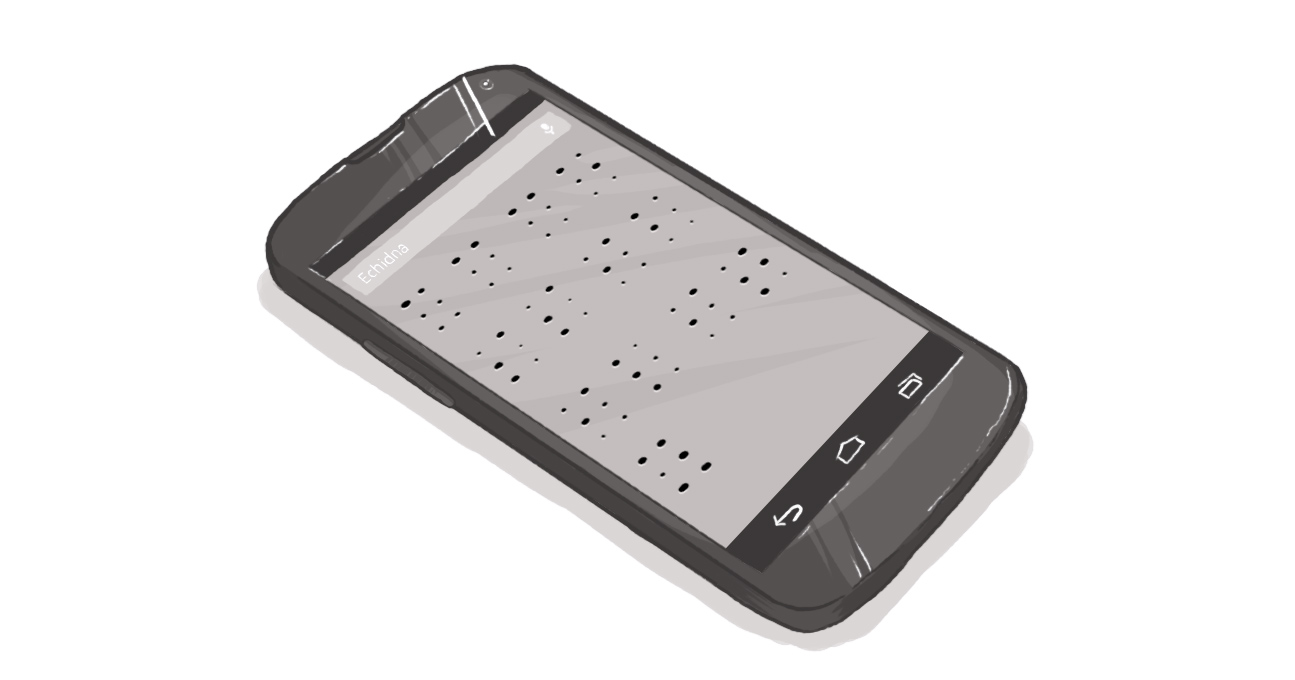How to Make Your Workplace Inclusive? Just Ask!

Inclusivity isn't an end goal -- it's not just about hiring someone or building an accessible website -- it's a step along a much longer path. But that path doesn't have to be arduous.
This month’s Echidna blog focus on accessibility began with the Ability First Champion awards. That event focuses on employers who have put ability above all else in their hiring choices. It's a great initiative and really the way hiring choices should always be made.
But it’s also important that as more people with disabilities enter the workforce, everyone involved understands how inclusion is best achieved.
My colleague Jay has written some excellent posts this month on accessibility in several forms. One common thesis of his is that inclusion of persons with disabilities shouldn’t be something special -- it’s just part of being a good member of society. Or, in this case, member of a workplace. Though this is still a paradigm shift for me, it is a refreshing perspective that suggests that nothing I will recommend here is unusual or inconvenient for a workplace looking to include all of its staff.
My intention is not to suggest that having employees or colleagues with disabilities is somehow challenging or significantly different, but with any diverse group entering a workplace there are certain considerations to be made that will help everyone be at their best.
Language
I believe words matter. We understand that terms such as "lame," "crippled," "handicapped," "dumb," and “retarded” are not words used in polite society any longer when referring to people with disabilities. That's just common sense and common courtesy.
However, there are so many ways to refer to the same disability now that I don't blame people for being confused.
I reject the term “vision loss” and prefer "blind," "low vision," or "visually impaired." I don’t "suffer from a disability," nor are those I know in wheelchairs "confined" to them. I am not "differently abled," as far as I know, although one could argue that everyone’s unique group of talents makes them so, disability or otherwise.
But I don’t expect people to appreciate the subtleties. All I ask is that if you’re confused, please ask. It’ll save everyone from awkward pauses in first day on the job conversation.
Discussing a Person’s Disability
Openness is the best way forward in any relationship, but it doesn’t mean that the cause of a new employee’s disability is first-day-on-the-job conversation.
Questions about how to assist or how someone will perform all their duties given their disability are completely reasonable. Asking someone about their abilities ("Is this font large enough?" "Would it be easier if your desk was elsewhere?") makes sense. After all, the new hire is still expected to fulfill his or her duties and clarifying how that can best happen is logical. But asking, "Have you always been this way?" on day one is inappropriate.
First, it suggests that the only interesting thing about this new hire is their disability. Second, it’s a health concern above all else. Third, a cause of a person’s disability might be more traumatic than casual water cooler conversation would normally find acceptable.
I personally have no issue discussing my own disability, but for me there’s nothing uncomfortable about premature birth and consequential retinal detachment. But there are those whose disabilities were caused by severe accidents, suicide attempts or other acts of violence, or other things that they may not be eager to discuss with people whom they just met at work.
Office Orientation
Everyone requires an office tour, but it’s important to give a bit more information for employees with disabilities. Important areas to indicate are washrooms, eating or socializing areas, and places where the employee will be working.
Other things to note:
- Introduce the new employee to key people that they might come across on a daily basis;
- Use lefts and rights rather than here or there for visually-impaired employees;
- Give time for questions and reviewing of common routes a couple times if possible;
- If there are particular areas where quiet is required at all times or special protocols must be taken, make sure to indicate that -- a silent workspace appears empty to someone who can’t see, especially if that someone is particularly nervous on their first day on the job.
Workplace Communication
This is a big one, as it extends from verbal to written communication. I’ll begin with verbal.
Greet employees with disabilities. This may sound obvious but doesn’t always happen, especially early on. Silent people are invisible to someone who can’t see, so even if a blind employee suspected someone else might be in the room with them, they might think twice before saying anything for fear of talking to empty air. This might mistakenly make them look unfriendly.
When first talking to an employee with a visual impairment, identify yourself. There are a lot of people to meet, and though voices can be learned, it takes time. If a new employee works with a sign language interpreter, speak to the employee directly. The interpreter is only a translation vehicle for the new hire.
In the case of speech difficulties or the use of communication technology, wait for the person to finish their thought rather than finishing it for them. There is no need to crouch to talk to someone in a wheelchair and don’t lean on a person’s mobility aid. Offer your arm for sighted guide, but keep physical contact within appropriate levels for a workplace.
While in meetings or groups, indicate who is present. Avoid side conversations if at all possible, as someone with an FM system is only able to really hear one person at a time. Have someone take notes and provide copies afterwards. Provide slides and other materials digitally to all participants. Make sure group discussions are held where everyone can physically access the meeting area.
For written communication, make sure it’s in a format everyone can read. If an employee has low vision, indicate posters or other new hard-copy announcements, as they might not be aware of them if they’re focussed elsewhere. If images or giphs are regularly part of the workplace atmosphere, provide descriptions.
Socializing
Include employees with disabilities in existing social traditions at work. Make sure they know about the lottery pool or the weekly lunches out. Try to find a variety of entertainment options that all can participate in. Karaoke or charades are both fun, but may not be the best for employees who are hard of hearing or visually impaired. Work with all staff to make fun events inclusive for everyone.
In short, working with people with disabilities doesn’t involve anything beyond common sense and common courtesy. But if people aren’t used to those with disabilities in the first place, then it might feel intimidating. For this reason, I hope this mini guide is helpful.
But I don’t pretend to know everyone’s situation, so not everything I’ve said here will apply universally. The only way to know is to ask.
How do you integrate a person with disabilities into the office?
SUBSCRIBE TO OUR E-NEWSLETTER
 Subscribe
Subscribe


